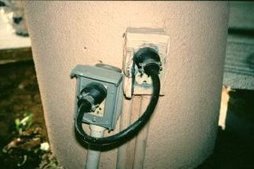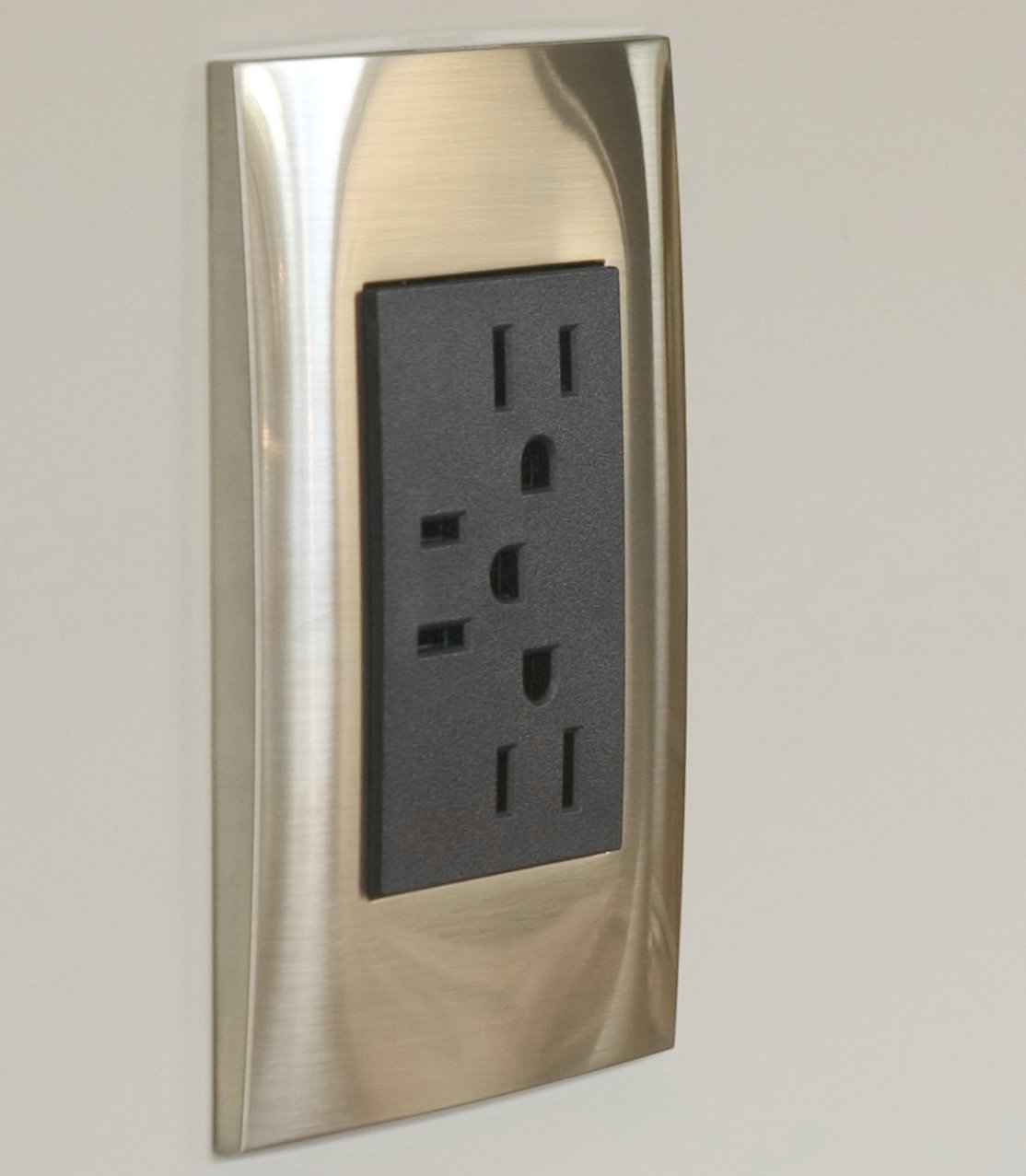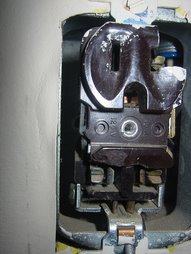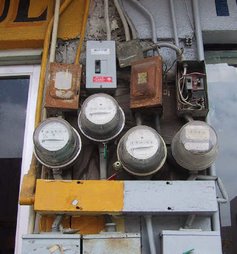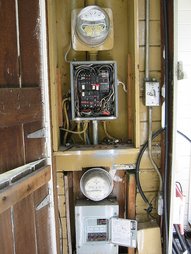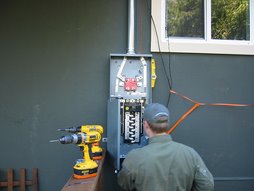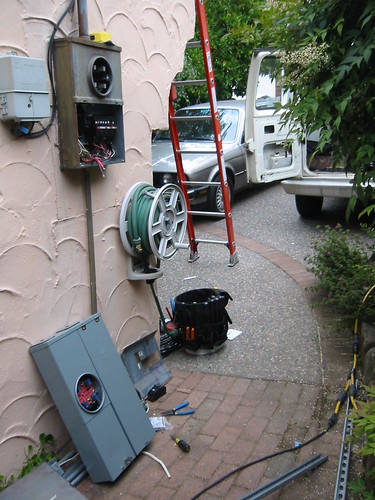Why is AIC rating important? When transformers are large or close to a house this rating should be considered. Distance has a huge effect on the available fault current at the load end. Your service equipment must be suitable for the fault current that is available. The easiest way to achieve this is to use nothing less the equipment rated 22k aic when the xfmr is close to the house. This is just Ohm's law. If the voltage remains (relatively) the same, the amperage (fault current) will go down if the impedance is increased. The conductors between the transformer and the service introduce that impedance. The farther away from the transformer you are, the more impedance you have, and therefore the less fault current available you will have. You have to know the available fault current at the line side of your service equipment to select the correct equipment. In many cases the off the shelf stuff is fine, but if the available fault current is high, you are required to buy equipment suitable for that fault current. Look at NEC110.9 and 110.10. If the distance to the pole is small and there is any doubt you need to contact the utility company and/or find out the size and impedance of the transformer that will serve your load. You can specify equipment that will need to be properly rated for that fault current duty.
Available Short-Circuit Current
EE Articles Menu By Mike Holt, Published in EC&M Magazine
Available short-circuit current (SCA) is the current in amperes that is available at a given point in the electrical system. This available short current is first determined at the secondary terminals of the utility transformer. Thereafter the available short-circuit current is calculated at the terminals of the service equipment, branch circuit panel and branch circuit load.
The available short-circuit current is different at each point of the electrical system; it is highest at the utility transformer and lowest at the branch circuit load. The available short-circuit current is dependent on the impedance of the circuit, which increases downstream from the utility transformer. The greater the circuit impedance (utility transformer and the additive impedances of the circuit conductors) the lower the available short-circuit current.
Factors that impact the available short-circuit current at the utility transformer include the system voltage, the transformer kVA rating and its impedance (as expressed in a percentage). Properties that impact the impedance of the circuit include the conductor material (copper versus aluminum), the conductor size, and it's length.
Author's Comment: The impedance of the circuit increases the further from the utility transformer, therefore the available short-circuit current is lower downstream from the utility transformer.
Interrupting Rating. Overcurrent protection devices such as circuit breakers and fuses are intended to interrupt the circuit and they must have an ampere interrupting rating (AIR) sufficient for the available short-circuit current in accordance with Sections 110-9 and 240-1. Unless marked otherwise, the ampere interrupting rating for branch-circuit circuit breakers is 5,000 ampere [240-83(c)] and 10,000 ampere for branch-circuit fuses [240-60(c)].
Extremely high values of current flow (caused by short-circuits or line-to-ground faults) produce tremendous destructive thermal and magnetic forces. If the circuit overcurrent protection device is not rated to interrupt the current at the available fault values, it could explode while attempting to clear the fault. Naturally this can cause serious injury, death as well as property damage.
Protection of Electrical Components. In addition to interrupting rating for overcurrent devices, electrical equipment, components, and circuit conductors must have a short-circuit current (withstand) rating that will permit the circuit overcurrent protective device to clear a fault without extensive damage to any of the components of the electrical system [110-9, 110-10, 250-2(d), 250-90, 250-96(a) and Table 250-122 Note].
If the available short-circuit current exceeds the equipment/conductor short-circuit current rating, then the thermal and magnetic forces can cause the equipment to explode and/or the circuit conductors as well as grounding conductors to vaporize. The only solution to the problem of excessive available fault current is to
(1) Install equipment that has a higher short-circuit rating
(2) Protect the components of the circuit by a current-limiting protection device such as a fast-clearing fuse, which can reduce the let-thru energy.



























